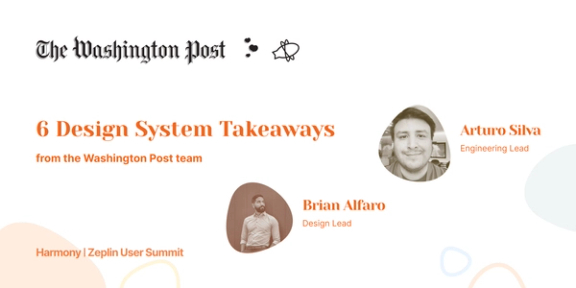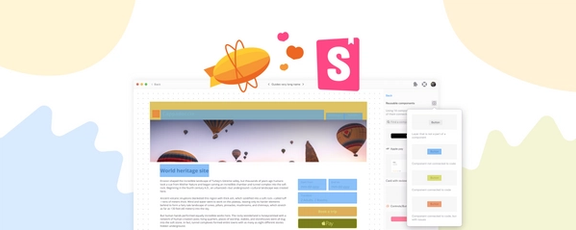One of the most important aspects of product development is user experience (UX). Nearly 90% of users will leave a site with bad UX. 🤯 And if that’s not reason enough to prioritize UX design, for every $1 invested in UX, returns range from $2 to $100. The UX design is one of the defining qualities that determine how much users enjoy a product, from its ease of use to functionality — so it’s natural that UX is a top priority for most designers and developers.
To create a positive user experience, design and development need to work together to create a functioning, seamless product that delivers on its promises and gives users a delightful experience. However, the gap between design and development makes creating exceptional UX difficult.
That’s why we invited Sr. UX Designer from Amazon Adam Warner, Product Design Director from Forbes Dan Revitte, and Front End Developer from Pixelmatters Daniel Pereira to share their thoughts at Harmony, Zeplin’s user summit. Each of these product teams work in different environments for three very different companies, yet each finds common ground in their challenges when uniting design and development to create an exceptional user experience.
Here are the highlights from Zeplin Sr. Director of Customer Success, Russ Drury’s conversation with Adam, Dan, and Daniel.
What does your typical product development process look like?
Off the bat, each speaker agreed on one key aspect of their process: getting development involved early. Inviting developers early on builds a product off of input from both teams and makes the entire process collaborative from start to finish.
“At every phase of creation, we have at least one representative from each team included in the meeting and providing input through sign-offs, approvals, technical advice, etc.,” says Adam Warner, Sr. UX Designer, Amazon. “For example, if I’m creating a UI, the dev team is going to see that early on and go, ‘Oh, that’s possible,’ or, ‘That’s not possible.’ I think that’s vital to the entire development process.”
Throughout the discussion, each speaker noted the importance of aligning both teams from the beginning to not only save time, but create a final product with the best UX design the two teams can create.
How do you ensure collaboration from start to finish?
After describing their processes, the discussion shifted toward the most common challenges that can slow down product development. Once again, the three agreed on the answer — miscommunication. Since it’s easy for design and development teams to silo during UX design, all three speakers emphasized the importance of consistent communication.
“We have constant communication throughout the design process so everyone knows what cards are on the table and what the process constraints are. This is so we are able to deliver the best product possible, and not just deliver something that’s done.”
— Daniel Pereira, Front End Developer, Pixelmatters
“Making sure communication is really smooth and that we’re all talking the same language is important. Everybody’s remote so I can’t really walk down the corner of the hallway to give feedback. You really need to have lots of communication channels open.”
— Dan Revitte, Product Design Director, Forbes
How do you use Zeplin to overcome collaboration challenges?
To keep both teams aligned, each company uses Zeplin to facilitate design handoff. The ability to see each design’s full history, know exactly what is final, and leave detailed flows and annotations makes a huge difference in transparency when creating a positive user experience through design.
“There’s actually such a simplicity to the Zeplin link. That living link will always get updated and always stay the same. When we’re making these business requirement documents or pitches for new features, we can just embed the link directly into the digital document. And from that point forward, it’s beautiful. We can pull that document up six months down the road, and that link goes to the mock, and the mock has been updated.”
— Adam Warner, Sr. UX Designer, Amazon
Where is UX design headed?
The discussion wrapped up with one final question — what does each participant think the future of UX design will look like? (Shocker, they all agreed — again!) As UX design grows and changes, all three stated that they think it’s only going to become more united between design and development.
“I think it’s just going to get more collaborative,” says Dan, “with designers getting involved in devs’ work and vice versa.”
“I am really looking forward to the evolution of tools like Zeplin to facilitate that moment where front-end design and UX design come together,” states Adam.
Adam, we are too.
Zeplin can help revolutionize your design handoff, enabling your teams to create a great UX design. Want to see how? Get in touch with us!




